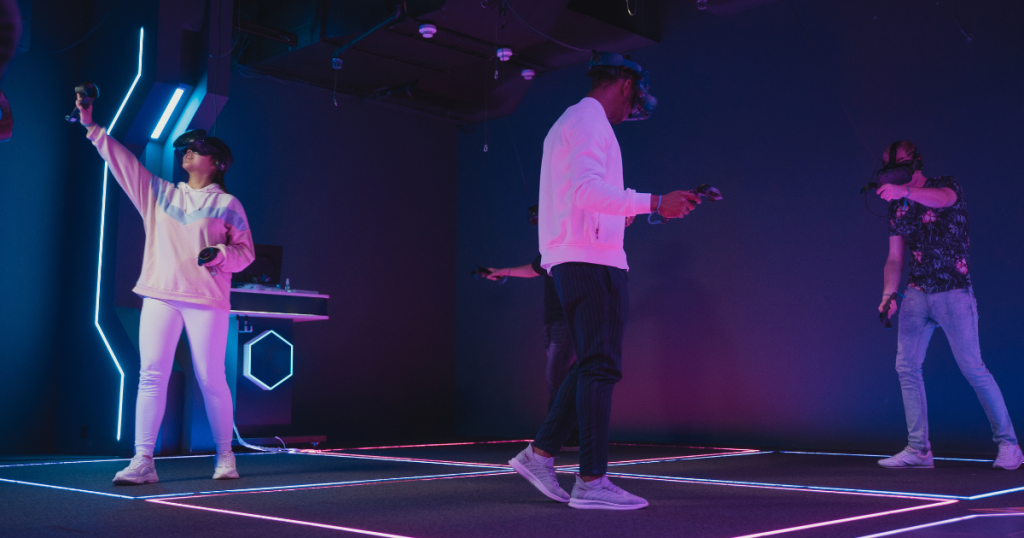The rise of 3D scanning cameras has transformed how the world captures, analyzes, and interacts with physical objects. Unlike traditional cameras, which record flat, two-dimensional images, 3D scanning cameras collect spatial data to create precise, three-dimensional models. These devices measure the depth, shape, and texture of objects, opening up possibilities across industries such as manufacturing, healthcare, gaming, architecture, and even fashion.
How 3D Scanning Cameras Work
A 3D scanning camera captures multiple data points using various technologies such as laser triangulation, structured light, or time-of-flight sensors. By measuring the distance between the camera and an object at thousands or millions of points, it constructs a detailed 3D representation. Some cameras can also capture color and texture, creating photorealistic models for visualization or digital replication. The result is a highly accurate digital twin of a physical object, suitable for analysis, modification, or replication.
Applications Across Industries
- Manufacturing and Engineering: 3D scanning cameras enable quality control, reverse engineering, and precise measurements of components. Engineers can quickly identify defects, compare prototypes with CAD models, and streamline production.
- Healthcare and Medicine: These cameras assist in custom prosthetics, surgical planning, and patient monitoring by capturing accurate anatomical data. Surgeons and designers can create highly personalized solutions for patients.
- Gaming and Entertainment: 3D scanning cameras bring characters, props, and real-world locations into virtual environments, enhancing realism in games, VR experiences, and films.
- Architecture and Construction: Buildings and historical sites can be scanned to create detailed 3D models for restoration, planning, or virtual walkthroughs.
- Fashion and Retail: Designers and retailers use 3D scanning cameras for body scanning, custom-fit clothing, and virtual try-ons, improving both design accuracy and customer experience.
Advantages of 3D Scanning Cameras
Precision and Accuracy
3D scanning cameras deliver exceptionally detailed and reliable measurements, capturing the smallest features and subtle surface variations of objects, structures, or even living beings. This high level of precision is crucial in fields like engineering, manufacturing, and healthcare, where exact dimensions can affect performance, safety, or functionality. Whether scanning mechanical parts for reverse engineering, architectural elements for renovation, or anatomical structures for medical modeling, these cameras ensure that every contour, angle, and detail is faithfully recorded, producing digital models that closely mirror their real-world counterparts.
Time Efficiency
A major benefit of 3D scanning cameras lies in their ability to drastically reduce the time needed for measurements and modeling. Conventional methods typically require manual measuring, detailed note-taking, and labor-intensive drafting, all of which are prone to mistakes and inconsistencies. By contrast, 3D scanning quickly captures extensive spatial data within minutes, ready for immediate processing and integration into digital workflows. This efficiency shortens project timelines, streamlines development processes, and frees professionals to concentrate on analysis, design, or creative work instead of repetitive data collection, making complex projects far easier to manage and execute.
Versatility
3D scanning cameras are remarkably versatile, capable of capturing everything from tiny objects to large architectural structures and even living beings. Small items such as jewelry, collectibles, or intricate mechanical components can be scanned with sub-millimeter accuracy, allowing for detailed analysis, replication, or digital archiving. On the other end of the spectrum, entire rooms, buildings, or outdoor landscapes can be mapped to create precise 3D models for construction planning, interior design, or cultural preservation. Even living subjects, like people or animals, can be scanned dynamically, enabling applications in healthcare, fashion, gaming, and virtual reality. This adaptability makes 3D scanning cameras suitable for an extraordinary range of professional, creative, and personal projects.
Digital Integration
Modern 3D scanning cameras excel at integrating with digital workflows, effectively connecting the physical and virtual worlds. Scans can be exported to CAD software for engineering, reverse engineering, or manufacturing purposes, enabling precise modifications and prototyping. They are also compatible with 3D printing, allowing physical reproduction of scanned objects, from intricate components to custom-designed models. In entertainment, gaming, and education, scanned data can be incorporated into VR and AR applications, creating immersive experiences and interactive digital content. This integration ensures that 3D scanning cameras not only capture reality but also enhance creativity, innovation, and efficiency across multiple domains.
Emerging Trends in 3D Scanning Cameras
3D scanning cameras are evolving rapidly, driven by advances in hardware, software, and artificial intelligence, making the technology more accessible, versatile, and user-friendly than ever before. Modern 3D scanning devices are compact and lightweight, enabling handheld use and easy integration with smartphones or tablets. This shift has democratized 3D scanning, opening up opportunities for creative professionals, hobbyists, educators, and students who previously needed bulky, expensive industrial equipment.
In addition to portability, AI integration is transforming how scans are captured and processed. Artificial intelligence enhances automatic alignment, corrects errors in real time, and improves texture mapping, producing more accurate and visually detailed models with less manual effort. Some scanners now use AI to fill gaps in incomplete scans or automatically identify and segment complex objects, reducing post-processing time.
Other emerging trends include hybrid scanning methods, combining laser, structured light, and photogrammetry to capture more precise data, and cloud-based workflows, which allow scans to be uploaded, shared, and processed remotely. Seasonal and industry-specific applications are also growing, such as fashion and retail for virtual try-ons, healthcare for prosthetics, and gaming/VR for realistic asset creation.
Future Outlook
The future of 3D scanning cameras is closely tied to the rapid expansion of digital twins, virtual reality (VR), augmented reality (AR), and personalized manufacturing. As industries increasingly rely on highly accurate digital models, 3D scanning will become an essential tool for creating, analyzing, and interacting with physical objects in a virtual environment. Digital twins—exact digital replicas of real-world objects or systems—will depend on advanced scanning technology to provide real-time updates, predictive analytics, and precise simulations for industries ranging from aerospace and automotive to healthcare and urban planning.
In addition, the integration of AI and machine learning is expected to enhance scanning capabilities even further. Future scanners may automatically detect and correct errors, optimize resolution for different materials, and generate 3D models in real time with minimal human intervention. The combination of portable, high-precision scanners with AI-driven post-processing could make customized products, personalized healthcare solutions, and immersive VR/AR experiences more accessible than ever.
As 3D scanning cameras continue to evolve, they will increasingly bridge the physical and digital worlds, enabling designers, engineers, and creators to innovate with unprecedented precision and flexibility. Everyday applications—from virtual try-ons in retail and interactive educational tools to digital preservation of cultural heritage—will become more practical, accurate, and immersive, transforming how people interact with objects, spaces, and experiences. The technology promises a future where the boundaries between reality and the digital realm are seamlessly integrated, fostering creativity, efficiency, and innovation across all aspects of life.
Everyday Potential
3D scanning cameras are no longer confined to industrial or professional use—they are increasingly integrated into everyday creative and practical applications. In interior design, homeowners and decorators can scan rooms to create accurate floor plans, plan furniture layouts, or visualize renovations before making physical changes. This reduces guesswork and allows for more precise decision-making when arranging or customizing living spaces.
In the arts, 3D scanning cameras enable creators to digitally preserve sculptures, craft virtual exhibitions, or experiment with new forms in a digital space. Artists can manipulate digital models, test variations, or reproduce pieces with 3D printing, expanding the creative possibilities far beyond traditional methods.
For gamers and virtual content creators, 3D scanning cameras provide the tools to generate realistic avatars, props, or in-game assets from real-world objects or even themselves. This opens up opportunities for highly personalized virtual experiences, immersive storytelling, and enhanced realism in gaming and VR environments.
Moreover, hobbyists, educators, and students are increasingly utilizing 3D scanning cameras for STEM projects, design education, and DIY experiments, positioning them as valuable tools for learning and exploration. With their accessibility, versatility, and user-friendly design, modern 3D scanners enable a seamless fusion of the physical and digital worlds, transforming creative ideas into accurate, editable digital models.
Everyday Uses and Creative Potential
3D scanning cameras are not just professional tools—they are increasingly practical for personal projects and creative endeavors:
Home Design
3D scanning cameras have become a keykey tool in home design and renovation, creating accurate digital models that simplify furniture planning, layouts, and remodeling while saving time and reducing errors, creating accurate digital models that simplify furniture planning, layouts, and remodeling while saving time and reducing errors. By scanning entire rooms or individual spaces, they create accurate, to-scale 3D models that allow homeowners and designers to plan furniture placement, experiment with layouts, and visualize renovations before making physical changes.
This technology helps prevent costly mistakes, ensures proper spatial planning, and can even simulate lighting, color schemes, and textures in a digital environment. For remodeling projects, 3D scans provide precise measurements that architects, contractors, and interior designers can rely on, streamlining workflows and improving collaboration.
Art and Sculpture
In art and sculpture, 3D scanning cameras allow artists, collectors, and museums to digitally preserve and reproduce valuable pieces. Sculptures, installations, and intricate designs can be captured in extraordinary detail, preserving every curve, texture, and nuance. These digital models can be used for archival purposes, virtual exhibitions, or 3D printing reproductions, allowing artists to experiment with modifications without altering the original piece. Additionally, 3D scanning facilitates remote sharing and collaboration, giving global audiences access to artwork that may otherwise remain inaccessible.
Gaming and Avatars
3D scanning cameras are transforming gaming and virtual experiences by allowing the creation of highly realistic, custom 3D avatars, props, and environments. Gamers and content creators can scan themselves or physical objects to generate digital counterparts that can be used in video games, VR experiences, or animation projects. This technology enhances immersion by enabling characters and assets to reflect real-world dimensions, textures, and details. Designers can also experiment with props or environments in virtual spaces before committing to production, streamlining creative workflows and expanding the possibilities for personalized gameplay and storytelling.
Education
In educational settings, 3D scanning cameras provide a hands-on, interactive way to teach complex concepts. Geometry, anatomy, and spatial reasoning can be brought to life through scanning real objects or human models, allowing students to explore and manipulate digital representations. In art, biology, or engineering classes, 3D scans enable detailed study of structures that may be too fragile, large, or intricate to handle physically. By integrating 3D scanning into curricula, educators foster experiential learning, encourage creativity, and help students develop digital literacy skills that are increasingly valuable in modern STEM and design fields.
Transforming Industries Through Digital Capture and Replication
3D scanning cameras are revolutionizing the way objects, people, and spaces are digitally captured and recreated. Combining precision, efficiency, and versatility, these tools have become integral to industries such as manufacturing, healthcare, art, gaming, and interior design. By enabling accurate measurement, detailed analysis, and faithful replication, tasks that once demanded extensive manual effort are now completed more quickly and reliably.
Ongoing technological advancements continue to bridge the gap between physical and digital worlds. This progress unlocks new possibilities for innovation, customization, and immersive experiences, allowing digital representations to be manipulated and explored in ways previously unattainable. The result is a seamless integration of digital and physical realities, expanding capabilities across industries and creative endeavors alike.





